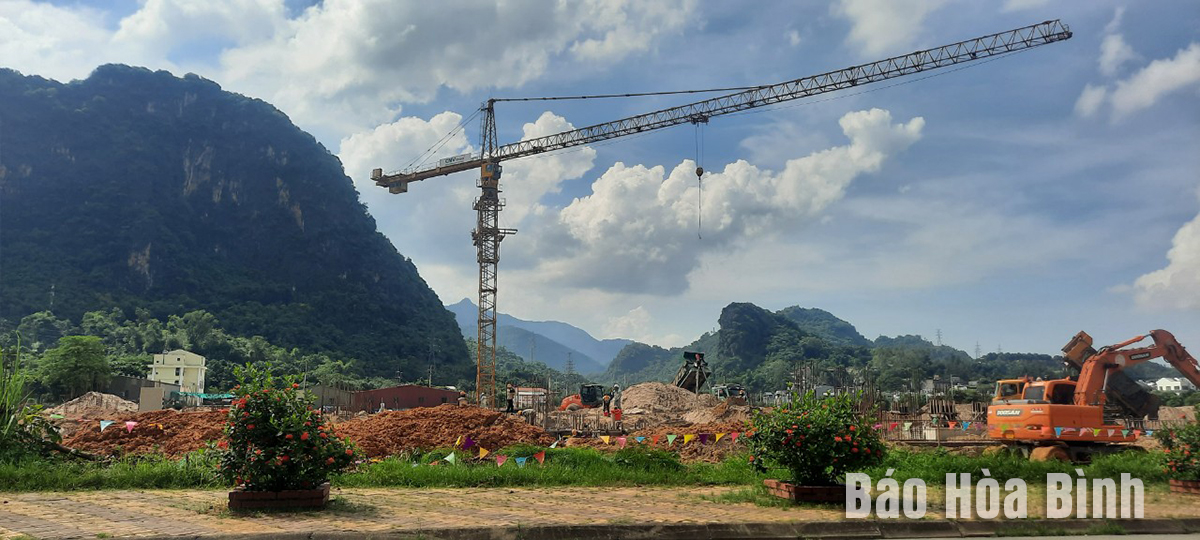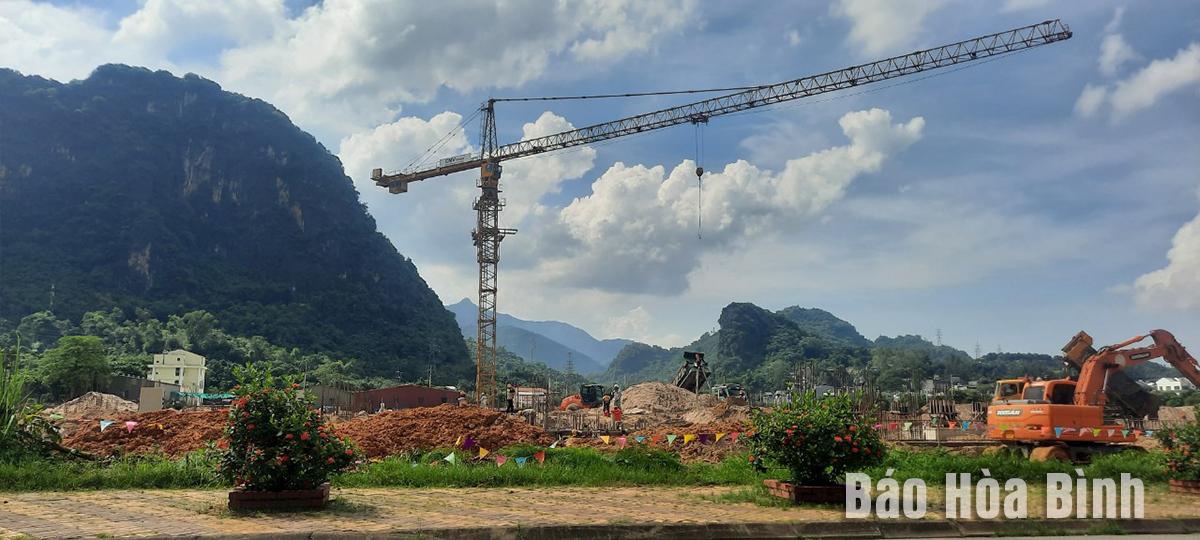
The electronic printed circuit board (PCB) manufacturing and processing project in Hoa Binh city’s Da River Left Bank Industrial Park of Japan’s Meiko Group, which has a total investment of 4.66 trillion VND (185.9 million USD), is expected to create jobs for thousands of workers and make a positive contribution to the local budget.
The provincial Party Committee and the provincial People's
Committee have directed relevant departments, sectors, and infrastructure
developers to support the investor in carrying out related procedures, and
speeding up the implementation progress, with the aim of putting the factory
into operation in the second quarter of 2025.

Construction on
the factory’s infrastructure sped up.
After many years of preparation, work on the factory started
on April 13, 2024. Once operational, it is expected to employ about 3,000
workers, and contribute about 200 billion VND per year to the budget by 2030.
At a recent working session with executives of the Meiko
Group, provincial leaders continued to affirm the best support for the investor
to effectively implement the project.
Secretary of the provincial Party Committee Nguyen Phi Long
appreciated the group’s decision to carry out a very big investment project in
Hoa Binh province. He stated that over the past time, the provincial
authorities have created favourable conditions for Japanese enterprises and
investors to conduct production and business activities, especially by guiding
and implementing investment procedures in accordance with legal provisions.
Hoa Binh is committed to accompanying the group in the
implementation process of the project, thereby contributing to Vietnam-Japan
relations, and to promoting sustainable socio-economic restructuring of the
province, he added.
Meiko President & CEO Yuichiro Naya said that the group
has invested in building four PCB factories in Vietnam, and the project in Hoa
Binh province is the fifth of its kind.
He also shared the group’s plan to build the second factory
in Hoa Binh after the first is put into operation in October 2025, hoping that
the group will have access to and use a stable power source and a clean water
system, and contribute to the development of Hoa Binh province in many other
fields.
According to data from the Hoa Binh Provincial Party Committee, the industrial production index for the first six months of 2025 is estimated to have increased by 20% compared to the same period last year. This marks the highest year-on-year growth rate for this period since 2020.
In the first six months of 2025, Hoa Binh province’s export turnover was estimated at 1.145 billion USD, marking an 18.11% increase compared to the same period in 2024. Import turnover was estimated at $ 804 million, a 17.15% increase, which helped the province maintain a positive trade balance.
The lives of the ethnic minority farmers in Tan Lac district have gradually improved thanks to the new directions in agricultural production. This is a testament to the collective strength fostered through the professional associations and groups implemented by various levels of the district’s Farmers’ Union.
With the motto the "product quality comes first,” after nearly one year of establishment and operation, Muong village’s Clean Food Agricultural and Commercial Cooperative, located in Cau Hamlet, Hung Son Commune (Kim Boi district), has launched reputable, high-quality agricultural products to the market that are well-received by consumers. The products such as Muong village’s pork sausage, salt-cured chicken, and salt-cured pork hocks have gradually carved out a place in the market and they are on the path to obtaining the OCOP certification.
In the past, the phrase "bumper harvest, rock-bottom prices" was a familiar refrain for Vietnamese farmers engaged in fragmented, small-scale agriculture. But today, a new spirit is emerging across rural areas of Hoa Binh province - one of collaboration, organisation, and collective economic models that provide a stable foundation for production.
Maintaining growing area codes and packing facility codes in accordance with regulations is a mandatory requirement for agricultural products to be eligible for export. Recently, the Department of Agriculture and Environment of Hoa Binh province has intensified technical supervision of designated farming areas and packing facilities to safeguard the "green passport" that enables its products to access international markets.



